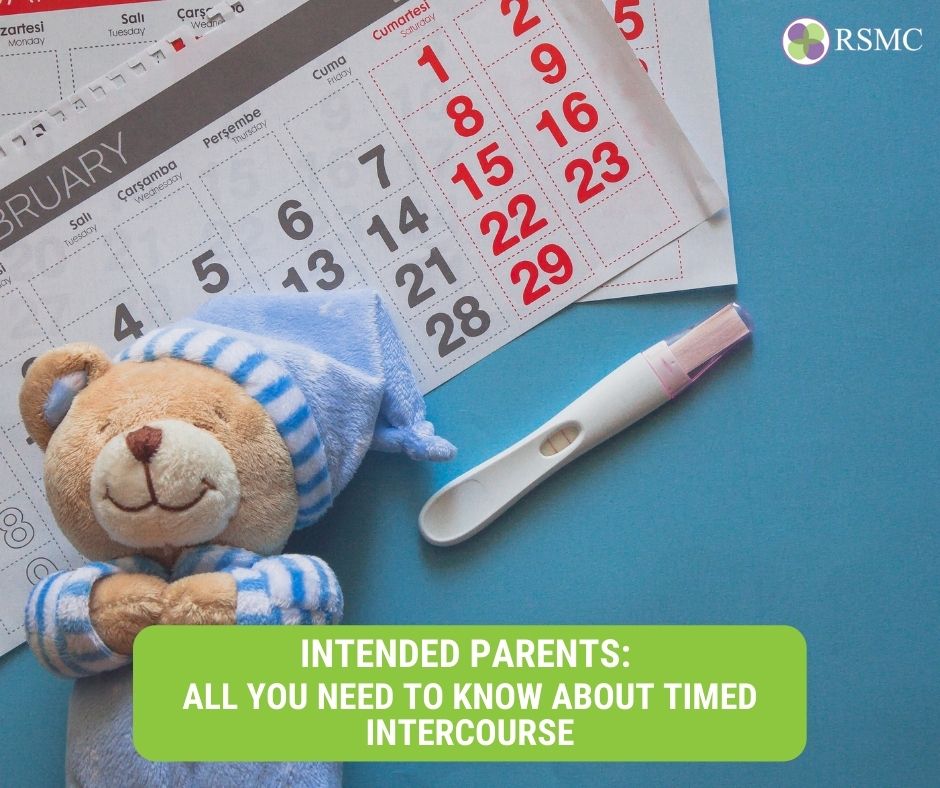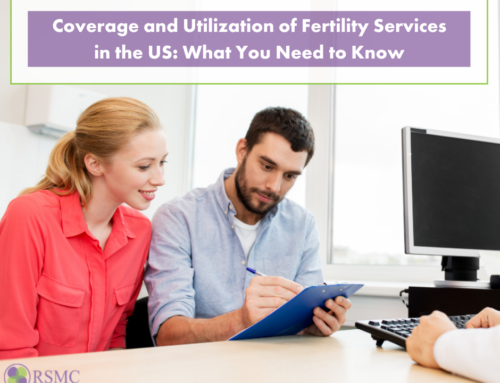Although you can get pregnant if you have unprotected sex at any time of the month, there are certain days of your menstrual cycle when you are more fertile. Hence, couples who are trying to become pregnant are often advised to go with timed sexual intercourse around their fertile window to increase their chances of getting pregnant.
And that brings us a few questions:
- How long after a positive ovulation test do you remain fertile?
- How do you take advantage of the information provided by ovulation tests?
The answer to the first question is – not long. Your eggs remain viable for about 24 hours after they are released from the ovaries. Optimizing this window with the 36 hours timeframe between a positive ovulation test and actual ovulation, you have got only about 60 hours or 2½ days (even that varies) during your cycle when chances of getting pregnant are highest.
And answer to the second question – timed intercourse cycle, a good way to optimize the small fertile window with the help of ovulation prediction kit and stimulation medication to encourage egg production in ovaries and raise the chances of getting pregnant. This process also involves only a little intervention from a fertility expert.
What is Timed Intercourse, Exactly?
Timed intercourse is a carefully scheduled sexual intercourse around that period of your menstrual cycle when you are most likely to get pregnant. This simple but effective method is done by optimizing your fertile period using medication and doctor’s guidance to promote egg production in the ovaries, induce ovulation, and improve your chances of conceiving on your own. Unlike IVF or other complex treatment options, it requires little intervention from fertility specialists. This treatment has a high chance of success if done correctly.
Good candidates for a timed intercourse cycle are:
- Women with absent or irregular ovulation
- Hormonal issues during their monthly cycle, resulting in spotting
- Unexplained infertility
However, as with any fertility treatment, your physician will conduct a series of tests before you proceed on this cycle. For women, this includes blood tests and an ultrasound examination to check egg supply, ovarian function, and the overall shape of the reproductive organs. Men, on the other hand, may have to undergo a physical examination and a semen analysis to know the sperm count, concentration, motility, and morphology (shape).
The TIME
A woman has the best chances of conceiving around the first 5 days before she ovulates until a day after her ovulation. If sperm comes in contact with an egg during this ovulation window, pregnancy may occur.
Unlike female eggs that cannot survive more than 12 to 24 hours after they are released from the ovaries, sperm can live for about 5 days in the cervix as long as it is covered by cervical mucus. The cervix secretes this mucus due to increasing estrogen levels as ovulation nears. Since sperm survives longer, you have the best chances of success within this six-day fertile window. So, if you have sex multiple times during this period, your odds of getting pregnant increase.
It is recommended that women in their early thirties with a 28-day menstrual cycle have plenty of sex around day 12 to 17.
Below we will be discussing the steps you may take after you are cleared to complete a timed intercourse cycle. But since fertility treatment is usually personalized, not every patient will follow all the exact steps. Your fertility doctor can make certain decisions to improve your personal chances of becoming pregnant.
Why Timed Intercourse Works
- A woman has a 42% chance of conceiving on the day preceding her ovulation- the most fertile day of her cycle.
- 68% of women aged 20 to 40 will get pregnant within 3 months of trying, and 92% will achieve pregnancy within 12 months.
- 45% of women who are 25 years or younger will conceive within one cycle of timed intercourse, while only 20% of women aged 35 or older will become pregnant within a cycle.
The best thing you can do to increase your chances of natural conception is to track your menstrual cycles and schedule sexual intercourse around ovulation. If you are not having sex during your fertility period, you have little to no chances of becoming pregnant. Since you are more likely to conceive in the five days before ovulation and most likely on the day preceding ovulation, you should try to be sexually active within this period if you really want to achieve pregnancy.
According to some sources, it is good to have sex every other day within your fertile window, but there are no studies indicating what the optimal sex frequency is. It appears the more frequently you have sex, the better.
Timed intercourse is a simpler and less costly option compared to other fertility treatments like intrauterine insemination (IUI), in vitro fertilization (IVF), etc. So, it’s advisable to first undergo a time intercourse cycle before moving on to other more costly options.
Getting the Timing Right
A lot of women have difficulty knowing when they are in their fertile period. The best approach, according to experts, is to start having sex around day 10 of your menstrual cycle and continue almost every day until ovulation and on the day after ovulation. It’s good to begin on day 10 because estrogen levels are typically high on this day, and the endometrium (the lining of the uterus) should be getting very thick.
Ovulation tracking gives a good picture of your fertility window – when you are most likely to become pregnant. Fortunately, there are at-home kits that help predict ovulation by detecting a rise in the urine levels of luteinizing hormone (LH), which normally occurs 24 to 48 hours before ovulation.
Note that ovulation predictor kits are not created the same. Some brands only display a smiley face or double blue lines when your luteinizing hormone surges, whereas others may show a numerical value indicating whether your LH level is high, low, or at its peak.
Special note: 10% of women with abnormal levels of luteinizing hormone get false outcomes with ovulation tests that give a negative or positive result alone.
Fertility experts recommend doing ovulation tests in the morning and keep doing them a day or more after you obtain your first positive result to see if it changes to negative after some days to know if the tests are really working.
You Can Take Progesterone Tests As Well
Moreover, it is good to undergo progesterone tests on day 21 of your cycle to know if ovulation has indeed occurred. If you have a low level of progesterone, it indicates that ovulation didn’t take place.
A BBT Test Might Also Help
One more way you can track ovulation is through your basal body temperature (BBT). Research shows that the resting body temperature increases when a woman ovulates. And you are most likely to become pregnant two to three days before this increase in temperature. However, this is usually used alongside other tracking methods, like monitoring the cervical mucus, as you cannot tell whether you are ovulating until that rise in temperature happens.
This is the reason why it is not advisable to depend on the BBT method only when tracking your ovulation
How a Timed Intercourse Cycle Works
1. Menstruation Begins
Once you begin your period and have a full flow, you will write down the date and tell your physician. If you don’t experience menstruation, there are progesterone medications you can take to trigger a period, e.g., Provera. If your cycle involves the use of ovarian stimulation drugs like Clomid, it is crucial to mark down the first day you have a full flow since this will be used to determine when you should take your medication.
2. Ultrasound Baseline
The next step is to undergo a transvaginal ultrasound to examine your ovaries. Note that your cycle will be canceled if you have huge cysts in your ovaries. However, if the cysts are tiny like those seen in PCOS women, you will be allowed to proceed on the cycle.
3. Medication Begins
Usually, the intended mother takes medication to increase hormone production and induce her ovaries to start developing an egg or eggs that will be released during ovulation. The medication can be in a pill form or in an injectable form.
While oral medication is usually taken for 5 days, injectable medication is usually administered for 8 to 12 days, depending on how well your ovaries respond. Your medical team will create an individualized medication schedule for you.
A lot of patients like taking oral medication in the morning, but some prefer to take them when they are about to sleep in order not to feel any possible side effects.
4. Monitoring the Ovaries
For proper timing of all the steps involved in the cycle, blood tests and ultrasounds will be conducted every two or three days to check follicular growth and ensure that everything is okay. This will let the physician know how many eggs are growing in your ovary.
If two or more eggs are released, your cycle will be ended in order to prevent conceiving multiples, which is risky for the mother.
Based on your egg development, your physician will also monitor your ovaries to know the best time to administer a trigger shot to induce ovulation.
5. Trigger Shot
You will be given a trigger shot when your eggs are matured to stimulate ovulation in the next 36-42 hours. This shot contains hCG (human chorionic gonadotropin) – a reproductive hormone that causes the follicles to break open and release an egg.
6. Timed Intercourse
After the trigger shot has been given, the hopeful couples are told to have sex almost every day for three days in their home.
7. Progesterone Testing
One week after timed intercourse, a blood test will be done to evaluate your progesterone levels in order to know if the trigger shot caused ovulation. If the levels of progesterone are found to be low, your doctor will recommend taking supplemental progesterone every day, whether orally or through the vagina. Progesterone helps the endometrium (womb lining) become thicker and aids the implantation of the embryo in the uterus.
Two weeks after ovulation, a blood test is conducted to confirm whether pregnancy has occurred. Note that pregnancy tests conducted earlier than two weeks usually give a false positive due to the hormone in the trigger shot.
What If the Cycle Fails?
If you are in your twenties or early thirties and have failed to get pregnant after a year of trying or if you have a health condition like PCOS or endometriosis, it may be a great time to seek the assistance of your fertility specialist or obstetrician/gynecologist as they can perform tests to know why you have not been able to conceive.
If your timed intercourse schedule is failing again and again, maybe the problem is somewhere else. We recommend scheduling a consultation to see if you are suffering from other infertility issues and what would be the right options for you to become parents.























